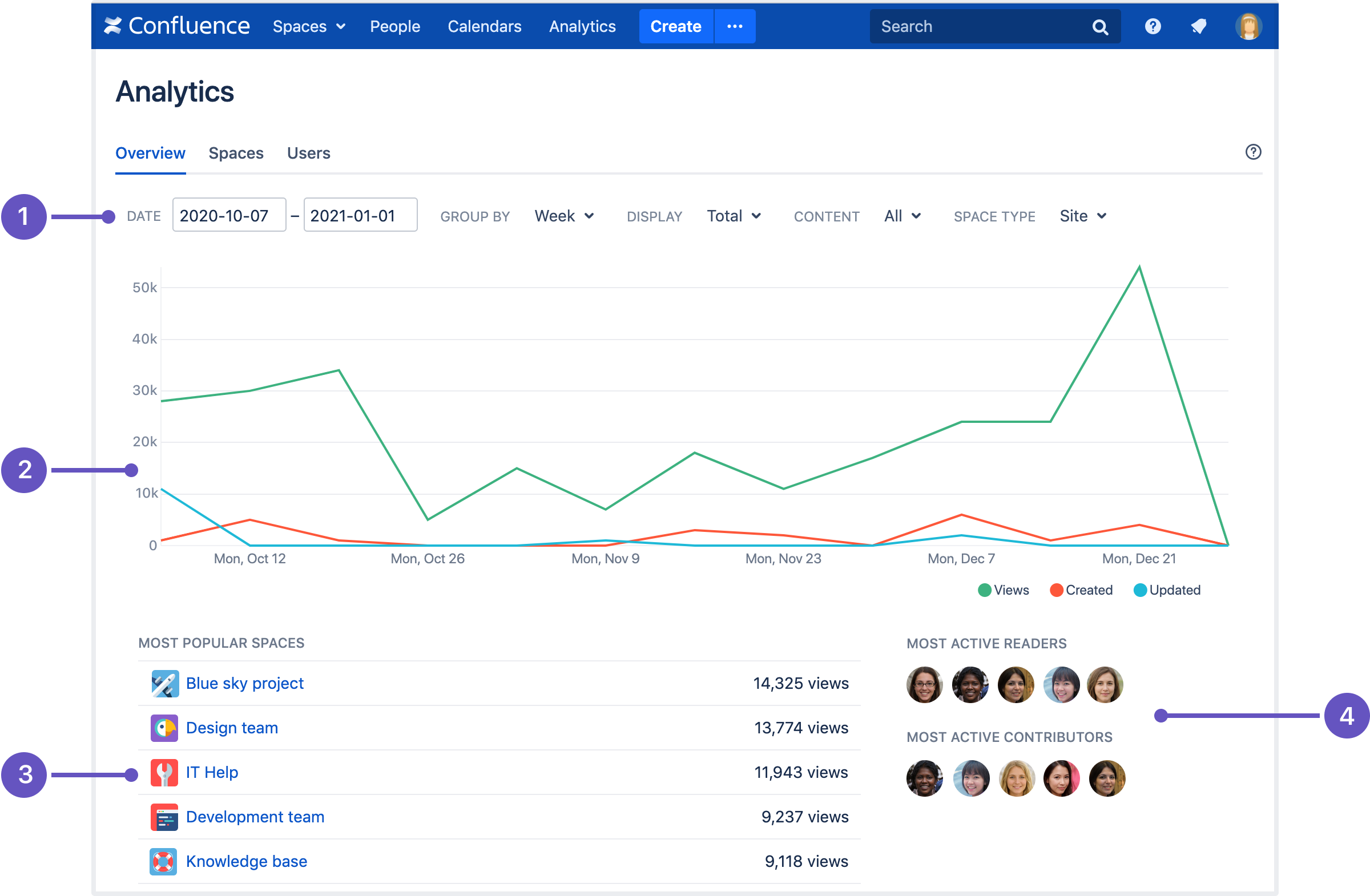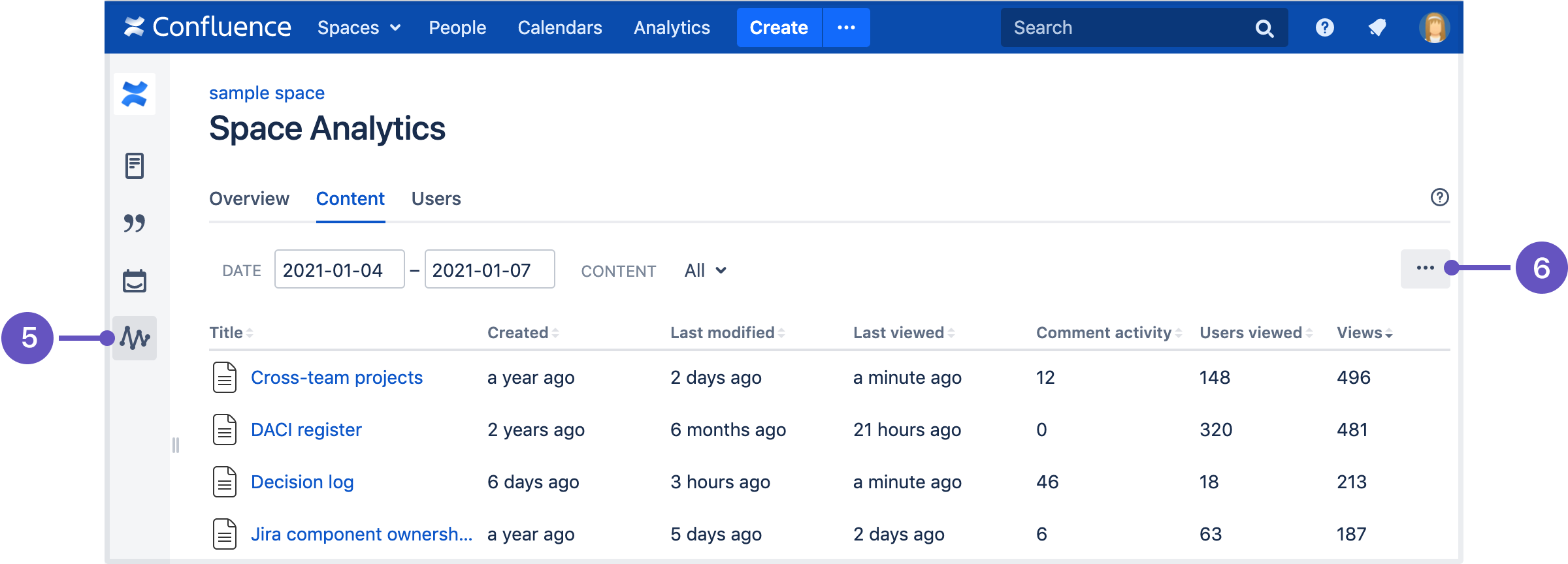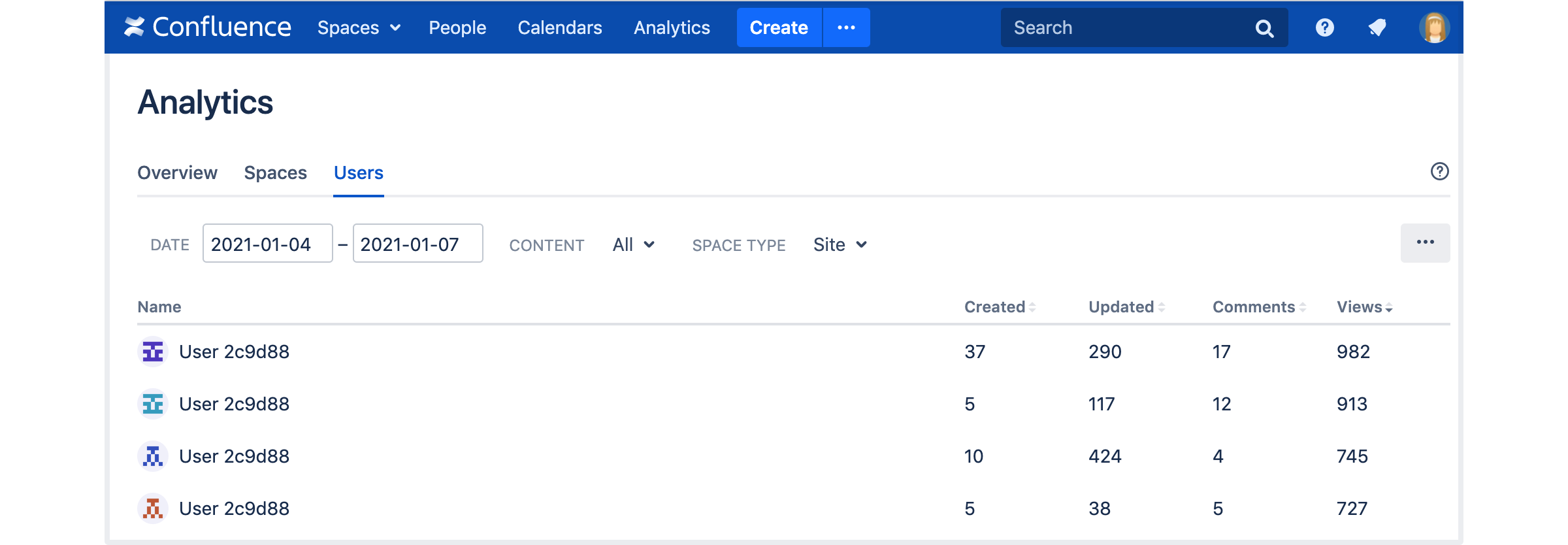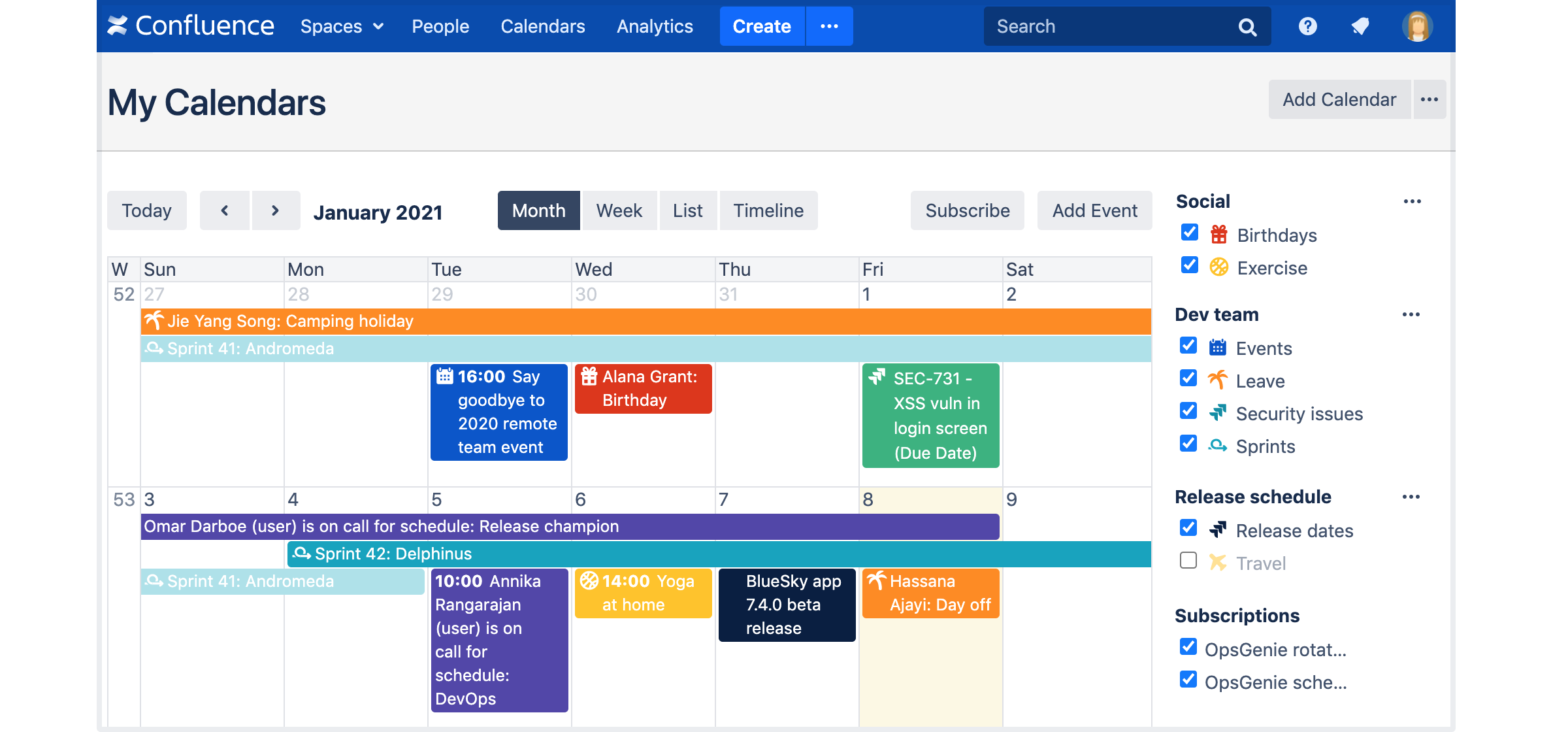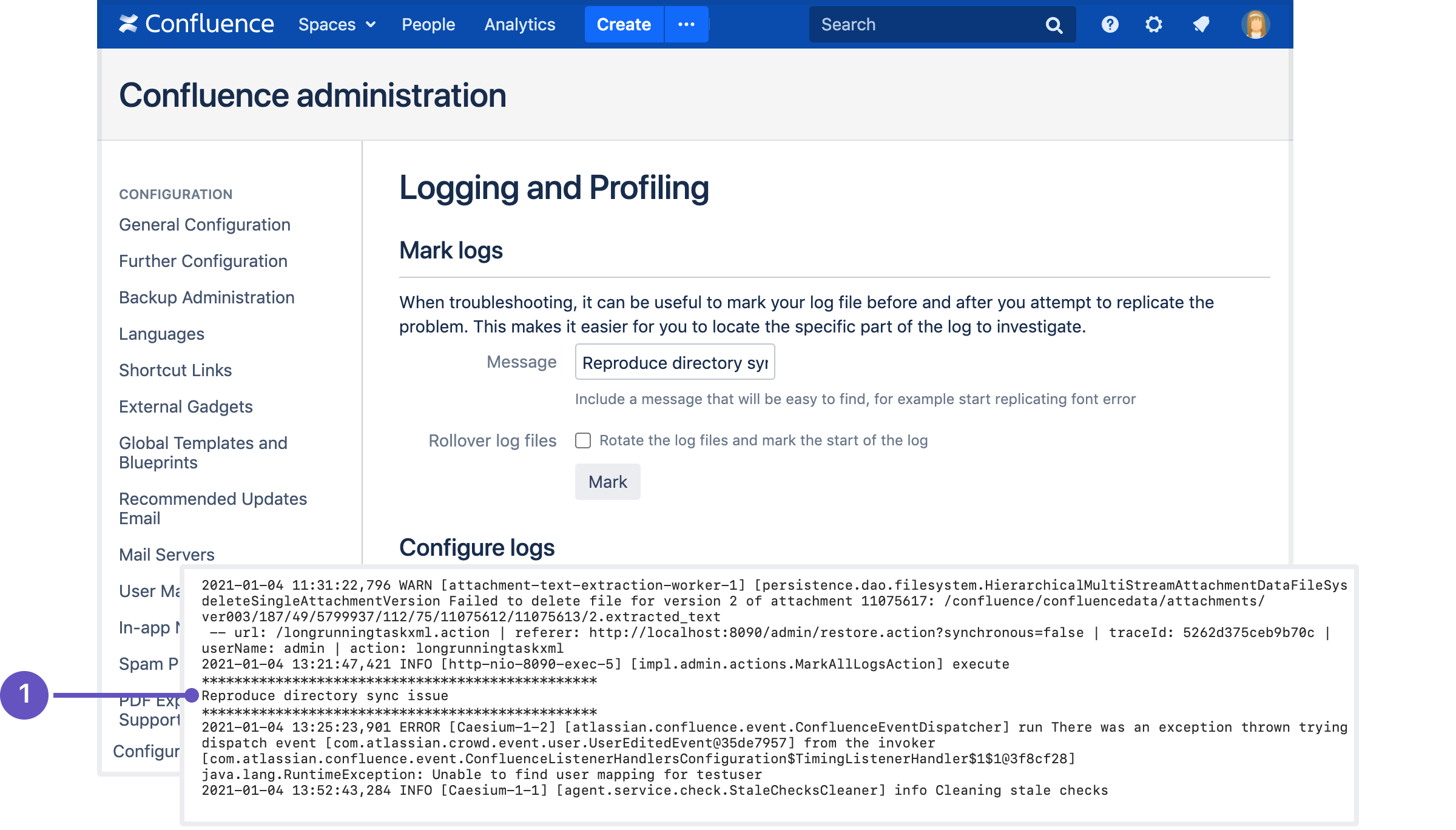Confluence 7.11 beta release notes
Development releases are not production ready. Development releases are snapshots of the ongoing Confluence development process. While we try to keep these releases stable, they have not undergone the same degree of testing as a full release, and could contain features that are incomplete or may change or be removed before the next full release.
No upgrade path. Because development releases represent work in progress, we cannot provide a supported upgrade path between development releases, or from any development release to a final release. You may not be able to migrate any data you store in a Confluence development release to a future Confluence release.
Atlassian does not provide support for development releases.
Issues with this beta?
Please raise an issue to tell us about it.
Highlights of 7.11.0-rc1
Released 21 January 2021
No significant changes in this release candidate
Highlights of 7.11.0-beta1
Released 14 January 2021
Analytics for Confluence is now part of Confluence Data Center
For DATA CENTER
Whether you want to monitor the reach of your communications, identify infrequently viewed spaces that could be cleaned up, or you're simply curious to know who creates the most content, analytics has the data you need to make good decisions.
Get insights about your whole site
The site analytics reports gives you a birds eye view of engagement with all the content in your site. Filter the report by date and type of content (1), visualise trends in viewing, creating, and updating across your site (2), identify popular spaces (3), and celebrate your most active viewers and contributors (4).
More than just page views
Drill down into the site analytics report to see data about a space, a page, or even an individual file attached to a page. Alternatively, access analytics reports from within a space (5) or on a page.
Track trends in creating, updating, and commenting on content. Sort by the last modified or last viewed date to identify stale or obsolete content that could be archived.
Export the data to Excel (6) to dive even deeper and do your own analysis.
Built with privacy in mind
We know some Confluence sites are complex, and may be made up of multiple teams, companies, or even be the place you collaborate with your customers. You can still get the benefit of granular analytics data, while not compromising people's privacy.
- Space permissions are respected at every level. People can only view data about spaces they have permission to see.
- Access to analytics reports can be limited to specific groups, specific people in individual spaces, or left open for everyone to view.
- Increased privacy mode allows you to anonymise people's names and avatars. You still get an accurate picture of the engagement, without revealing user information.
Lots of data? No problem
Granular retention rules and rate limiting options allow you to keep the amount of analytics data under control, and get access to insights without compromising your site performance. Fine tune these settings to suit your organization's needs:
- Set retention rules for analytics data by time and maximum number of records.
- Limit the number of reports that can be generated simultaneously, to prevent analytics queries slowing down your site.
Team Calendars is now part of Confluence Data Center
For DATA CENTER
A long time favourite, Team Calendars allows you to create calendars for yourself and your team, and view other calendars from your organization, all in one place.
Event dates at your fingertips
Create calendars to track events that affect your team, such as release dates, project milestones, or holidays. My Calendars gives you a personalized view of all the calendars you've subscribed to.
Alternatively, embed a calendar on a Confluence page to make crucial dates more visible. Custom event types and reminders allow you to customise each calendar to your exact needs.
Because calendars are connected to spaces, only people who can view a space can view the calendar associated with it. You can choose to restrict your calendar even further, and define exactly who can view and edit events.
Integrate with other apps and calendars
As well as adding your own calendar events, you can populate your calendars automatically, with data from:
- Jira
See your team's sprint dates, release dates, and issue due dates all in one view. - Opsgenie and PagerDuty
Publish schedules and on-call rotations where everyone can see them. - Outlook, Google, iCloud, and Teamup
Subscribe to your organisation's existing calendars, so everyone is on the same page.
Where Team Calendars really comes into its own is the ability to synchronise with other calendar apps, such as your Android or iPhone calendar, or your favourite desktop calendar client. If your app supports CalDav, you can even create and edit events from your favourite app.
Bug fixes and improvements
For long time Team Calendars users, we've fixed over 50 of the highest impact bugs, affecting everything from timezone issues, to sorting, and Jira integration troubles.
See the full list of bug fixes and improvements
Get Team Calendars
Want calendars but can’t upgrade yet? Depending on your current Data Center version, you may be able to install and use the app (at no cost). See our FAQ for all the details
If you’re a server customer and already have Team Calendars for Confluence, you can continue to renew your license. If you don’t already have a license you’ll need to upgrade to Data Center to get the app.
Mark logs when troubleshooting issues
When troubleshooting it can be useful to mark your log file before and after you attempt to replicate the problem. This makes it easier for you to locate the specific part of the log to investigate. If you enter a message, it will also be included in the logs (1).
Head to Administration menu , then General Configuration > Logging and Profiling to give it a try.
Upgrade notes
Changes to the Page Index macro
The Page Index macro can be quite memory hungry in large spaces. To prevent it causing out of memory errors in your site, the macro won't list any pages if there are more than 1000 in the space. This limit can be increased or decreased using the page.index.macro.max.pages system property.
Access logs enabled by default
Access logging is now enabled by default from Confluence 7.11. You can find the access logs in the <install-directory>/logs directory. The logs use the Tomcat Access Log Valve, and are retained for 30 days. To increase this change the maxDays attribute in the <install-directory>/conf/server.xml file.
You may need to allow some additional disk space to cater for the additional log files, particularly if you've got a big, busy site, and want to retain logs for more than 30 days.
If you've previously enabled access logging using Tomcat valve, you'll find that our recommended log pattern has changed. Consider using our new format, which is easier to read and contains more information.
pattern="%t %{X-AUSERNAME}o %I %h %r %s %Dms %b %{Referer}i %{User-Agent}i"Changes to the application log files
Currently most log entries are written to the application log file (atlassian-confluence.log), which can be difficult to parse, and can rotate too quickly when you're attempting to troubleshoot a problem. To help with this, some entries will now be written to the following separate log files, in the same directory.
- atlassian-confluence-index.log contains events related to the search index.
- atlassian-confluence-outgoing-mail.log contains events related to outgoing mail, such as notifications.
- atlassian-confluence-security.log contains events related to your users and user directories.
This should make troubleshooting problems significantly easier. If you send your logs to a third party tool for easier access and analysis, you may need to update your config to include these new files.
You can check the exact classes or packages that are logged to each file in the log4j.properties file under LOGGING LOCATION AND APPENDER. You can also set these packages to also send log entries to the atlassian-confluence.log .
You can also set these packages to also send log entries to the atlassian-confluence.log.
Review data retention and rate limiting settings for analytics
If you have Confluence Data Center, we recommend you review the default analytics data retention settings to make sure they're appropriate for your site. Analytics data is stored in the database, and will grow as people use your site. To prevent database tables growing too large (which can increase your backup time, or result in reports taking a long time to load) we have put in place some limits, which you can change to suit the size and usage levels of your site.
- Analytics data is retained in the database for 12 months, up to a maximum of 20 million records. A scheduled job will regularly delete any records that exceed this limit, starting with the oldest records.
- A maximum of 3 reports can be generated simultaneously. This means if four people attempt to load an analytics report at exactly the same time, the fourth will get a message to try again in a minute. As soon as a report loads, the next one can be generated.
- Generating a report will time out after 1000 seconds.
Go to Administration menu , then General Configuration > Confluence Analytics > Configuration to review, and change these limits if necessary.
GoodSoftware Analytics for Confluence app
If you previously used the Good Software Analytics for Confluence app, that was acquired by Atlassian, and have a Confluence Data Center license, when you upgrade to Confluence 7.11, the app will be replaced by the bundled version.
We have changed the way you grant global permissions to view analytics to make it handle a large number of groups. If you have limited analytics to specific groups, you'll need to make a note of the groups before upgrading, as you'll need to manually re-select these groups in the permissions screen after upgrading.
If you have a Confluence Server license, when you upgrade to Confluence 7.11, you'll be able to continue to access analytics until your Analytics for Confluence app license expires. After that time, if you want to continue to access analytics you'll need to migrate to Data Center.
Changes to the allowlist
When you create an application link, the URL is automatically added to the Confluence allowlist. From Confluence 7.11, outbound requests from these URLs require users to be authenticated, unless you specifically allow anonymous users.
In addition, you can also set the default allowlist behaviour for any new application links. Choose to allow all users (including anonymous), only authenticated users, or deny all outbound requests for all users. When a new application link is created, the URL will be added to the allowlist with your preferred setting already configured.
If you experience any issues with features that rely on application links, such as gadgets, you can choose to allow anonymous requests for that application link. This is less secure, but may be a useful workaround until you can make any required changes to your linked application for authenticated requests. If you are in this situation you can also consider creating more specific allowlist rules, to only allow certain wildcards or paths.
If you subscribe a third-party gadget, that doesn't require an application link, you will now need to add the gadget URL to the allowlist.
Upgrade will fail with Oracle 12c R1
This release contains changes that will cause your upgrade to fail with the following error when running on Oracle 12c Release 1.
Configuring database failed
StatementCallback; bad SQL grammar [ALTER TABLE DENORMALISED_SPACE_CHANGE_LOG MODIFY (ID DEFAULT DENORMALISED_SPACE_CHANGE_LOG_SEQ.NEXTVAL)]; nested exception is java.sql.SQLSyntaxErrorException: ORA-00972: identifier is too long
Setting up database instance failed. You can either try it again or or go back to the database selection pageWe ended support for Oracle 12c R1 in Confluence 7.4, so make sure you're running a supported version of Oracle before upgrading to Confluence 7.11.
Supported platforms changes
No platform changes planned for this release.
Infrastructure changes
Confluence 7.11 contains changes that may affect apps. Head to Preparing for Confluence 7.11 to find out how these changes will impact app developers.
